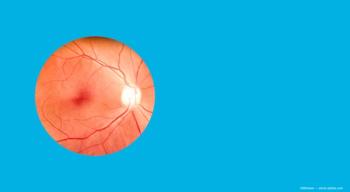
Treatment device changes paradigm in MGD care
Investigators review changes in ocular anterior segment blood flow and temperature after treatment of patients with meibomian gland dysfunction.
Reviewed by Takashi Itokawa, PhD, and Yuichi Hori, MD
The standard treatment for meibomian gland dysfunction (MGD) is application of warm compresses to the eye, with the goal of increasing the blood flow and temperature.
Care with a treatment device (LipiFlow, Johnson + Johnson) was found to be superior to warm compresses by increasing the palpebral and bulbar conjunctival temperature and blood flow compared with warm compresses, according to Takahashi Itokawa, PhD, from the Department of Ophthalmology, and Yuichi Hori, MD, professor and chair, Department of Ophthalmology, Toho University Omori Medical Center, Toho University School of Medicine, Tokyo, Japan.
The device applies localized head and pressure to the meibomian glands that results in evacuation of the meibum in the glands.
In their study, Itokawa, the first study author, and colleagues enrolled 13 eyes of 13 patients (mean age, 64.9 years) with MGD.
The investigators measured the noninvasive tear break-up time (NIBUT) and the blood flow in the upper and lower eyelid skin and palpebral and bulbar conjunctiva.
The measurements were performed before testing and then 5 minutes and 1 month after testing.
Itokawa reported that with application of the treatment device, the tear film stability improved until 1 month after treatment. Immediately after treatment, the temperature and the blood flow increased at 5 minutes after application of the treatment device.
However, at 1 month, both parameters at all locations returned to normal, except for the blood flow in the bulbar conjunctiva.
When the treatment device results were compared with those achieved with warm compresses, the investigators reported that the temperature before and 5 minutes after use of the device were higher in all ocular locations compared with the temperatures obtained with warm compresses.
The changes in the blood flow prior to and 5 minutes after application of the treatment device in the palpebral and bulbar conjunctiva were also significantly higher than the blood flow obtained with warm compresses.
However, the upper and lower eyelid skin did not become significantly warmer.
The investigators noted that conventional warm compresses heat the skin from the outside of the eyelid.
“However, LipiFlow heats the tissues from the inner side of the eyelids, by compression of the eyelid,” investigators said. “The difference in the palpebral temperature between before and after application of LipiFlow was twice that of the temperature achieved with warm compresses. LipiFlow adjusted the ocular surface more in patients with MGD for whom a higher temperature is needed to melt the meibum than in normal eyes.”
--
Takahashi Itokawa, PhD
e: [email protected]
This article is adapted from Itokawa’s presentation at the Association for Research in Vision and Ophthalmology 2021 virtual annual meeting. He has no financial interest in this subject matter.
Newsletter
Don’t miss out—get Ophthalmology Times updates on the latest clinical advancements and expert interviews, straight to your inbox.













































.png)


